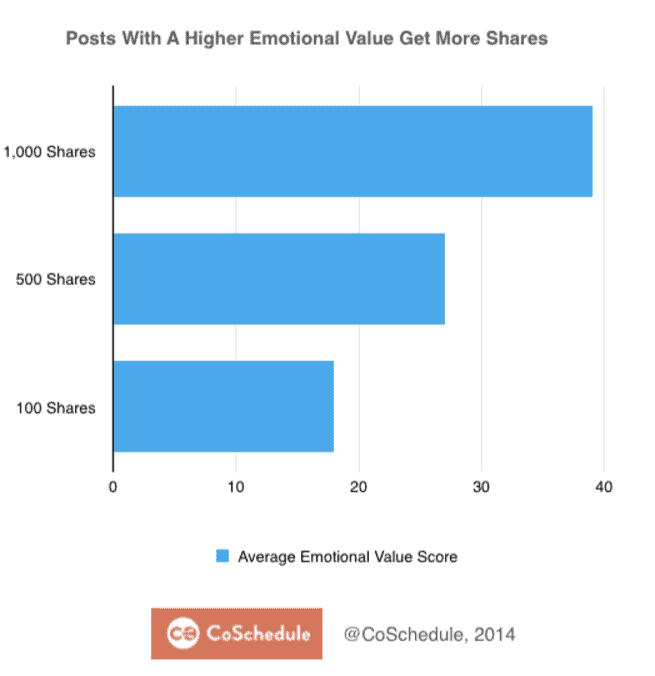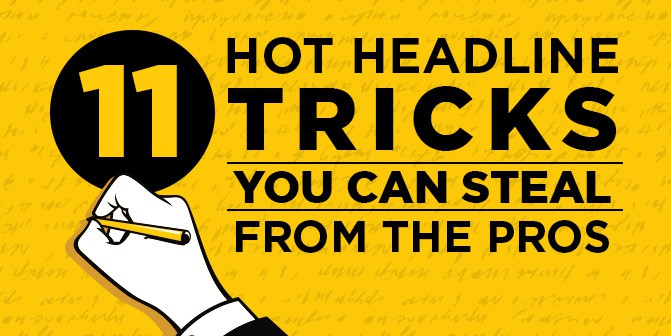The single most important part of your blog post, article, or white paper is the headline. It’s what sells the entire piece and entices the reader to click over and read it. Or download it. Or share it.
It’s all about that headline.
Here at Zen Media, we work in headlines. Our lives revolve around crafting the perfect headlines for landing pages, emails, blog posts, and social media spots. We’ve studied the strategies, tested the tricks, and experimented with the algorithms until we found the sweet spot for each client.
That’s the key because each brand has a different message for a different audience, so the words need to be just right. It takes some time and effort to get to know what works for each different situation.
How long do you spend crafting your headlines? Have you spent time studying and experimenting to find the perfect combination of words and emotions for your audience? Most brands pay only passing attention to their headlines, so they miss a lot of opportunities to get their message noticed and shared.
Want to know the ingredients to our secret sauce for compelling headlines? Here are some common tactics that work across industries. Try them out on your brand.
1. Say the word you.
No matter what demographic you’re reaching or what cause your audience supports, the most important thing is yourself. What will make me happy, successful, healthy, and wealthy? Use the word you to empower your audience to click over for more.
2. Give them a number or list.
The hottest blog posts right now are all about the lists. Use a number in the headline to tell your reader at a glance, “This is quick, helpful content.” That’s exactly what they’re looking for. Use odd numbers if possible, as general wisdom has found (and multiple bloggers and tech people have confirmed) that we tend to trust odd-numbered lists more than even-numbered ones.
Take a look at this partial list of Buzzfeed’s top trending posts from Dec. 6, 2016. Two out of the top three feature numbered lists, one of which is an odd-numbered list.
3. Uncover a deep fear.
Tap into an emotional need or deep-seated fear to generate curiosity. Advertise that you have the means to meet that need, and your audience will be begging for more. Find the worries that keep them up at night and address those head-on.
Take this headline, for example: “6 Mistakes That Can Bankrupt Your Startup.” When it comes to fears, fear of going bankrupt is pretty high on most people’s lists – especially entrepreneurs who are just starting out. As long as they convey real, helpful information, these kinds of articles are empowering, and your readers will be eager to demonstrate their own success by sharing the post with others.
Tap into an emotional need or deep-seated fear with your headline in order to generate curiosity. Share on X4. Ask the frequent questions.
Take frequent customer questions or issues facing the industry and use the question itself as a headline. You know they are asking for that answer, so it’s more likely that they’ll click on the article to learn more.
And here’s a content marketing tip for you: make sure you link to the articles about those frequently asked questions from your website’s FAQ page and include links to the FAQ page in your posts. You’ll pick up extra traffic, letting you get more mileage out of each piece of content.
5. Keep the message clear.
Don’t get too creative or humorous with your headlines. Save that for the body of your post. You want your headline to say at a glance exactly what the post is about and to compel the reader to click over for the answer. So keep it straight to the point.
6. Use industry vocabulary.
You want to be clear, but still, use some of the expected phrases and words common to your market. So keep a good balance. Use the correct terminology that your readers would expect, but don’t get so technical they have to look it up.
And remember, industry vocabulary doesn’t necessarily mean jargon. Although “jargon” and “technical terminology” are very close in meaning, jargon has generally come to mean language that excludes laypeople from understanding – and that’s something you definitely don’t want.
7. Collect lists of great headlines.
The deeper you go into digital marketing, the more confident you’ll become at crafting compelling headlines. But even the most experienced writer or social media manager will occasionally draw a blank. That’s when your notebook full of great example headlines saves the day.
Watch for lists of headlines online, copy down headlines that grab your attention, and make headline gathering your new favorite hobby. The staff at Zen Media each have long lists of their own favorites that they pull out to help them make a special post or article truly pop.
8. Be ultra-specific.
Just as you need to keep your message clear, you also need to keep it ultra-specific. If your post is about current trends in e-commerce, for example, you’d want to write something like “12 Statistics Proving That E-Commerce is Taking Over the Internet Economy,” as opposed to a headline like “Studies Show E-Commerce Continues to Grow.”
The first lets you know precisely what you’ll get: a specific number of hard statistics proving a particular point. The second one just gives you a vague impression of what the article is about, and it’s much easier to pass over.
9. Use emotional, or “power,” words.
What are power words? They’re the ones that connect directly to a reader’s emotions, inspiring them to feel happiness, anger, sadness, desire, need…the list goes on. These are words like “powerful,” “outstanding,” “extreme,” “hideous,” “astonishing,” and “breakthrough,” to name just a few.
With the right power word, you can compel a reader to click on your headline – it’s actually been proven. CoSchedule measured the Emotional Marketing Value of thousands of headlines in their database and found that most shared posts on popular blogs had higher Emotional Marketing Value than the least shared posts.

You can find plenty of lists of effective power words online – we like this one from SmartBlogger. Something to consider is that this works for negative power words too. In fact, blogger and entrepreneur Iris Shoor found that headline words like “kill,” “dead,” “bleeding,” and “war” resulted in many more shares than headlines that said basically the same thing, but in a milder fashion.
10. Make it urgent. Give your headline a sense of urgency by making readers feel that by not reading, they’re missing out on something – be it an excellent deal, important information, or a really funny video.
Take this past post from the MZ blog: “16 Tips to Help You Crush It on Pinterest Before Your Competitor Does.” That last phrase creates a sense of urgency by implying that if you don’t crush it on Pinterest, your competitor will – thereby beating you in reach, or sales, or whatever metric is most important to you at the time.
Give your headline a sense of urgency by making readers feel that by not reading, they’re missing out on something. Share on X
11. Keep experimenting.
Headlines are part art and part science. Sometimes, you’ll just know you have a dynamite title. Other times, you’ll need to try several different variations before a post really takes off. So keep trying! Analyze your results with different words and phrases, and learn by trial and error what are the best words for your own audience. When you find their unique language, it will be worth all the trouble.





